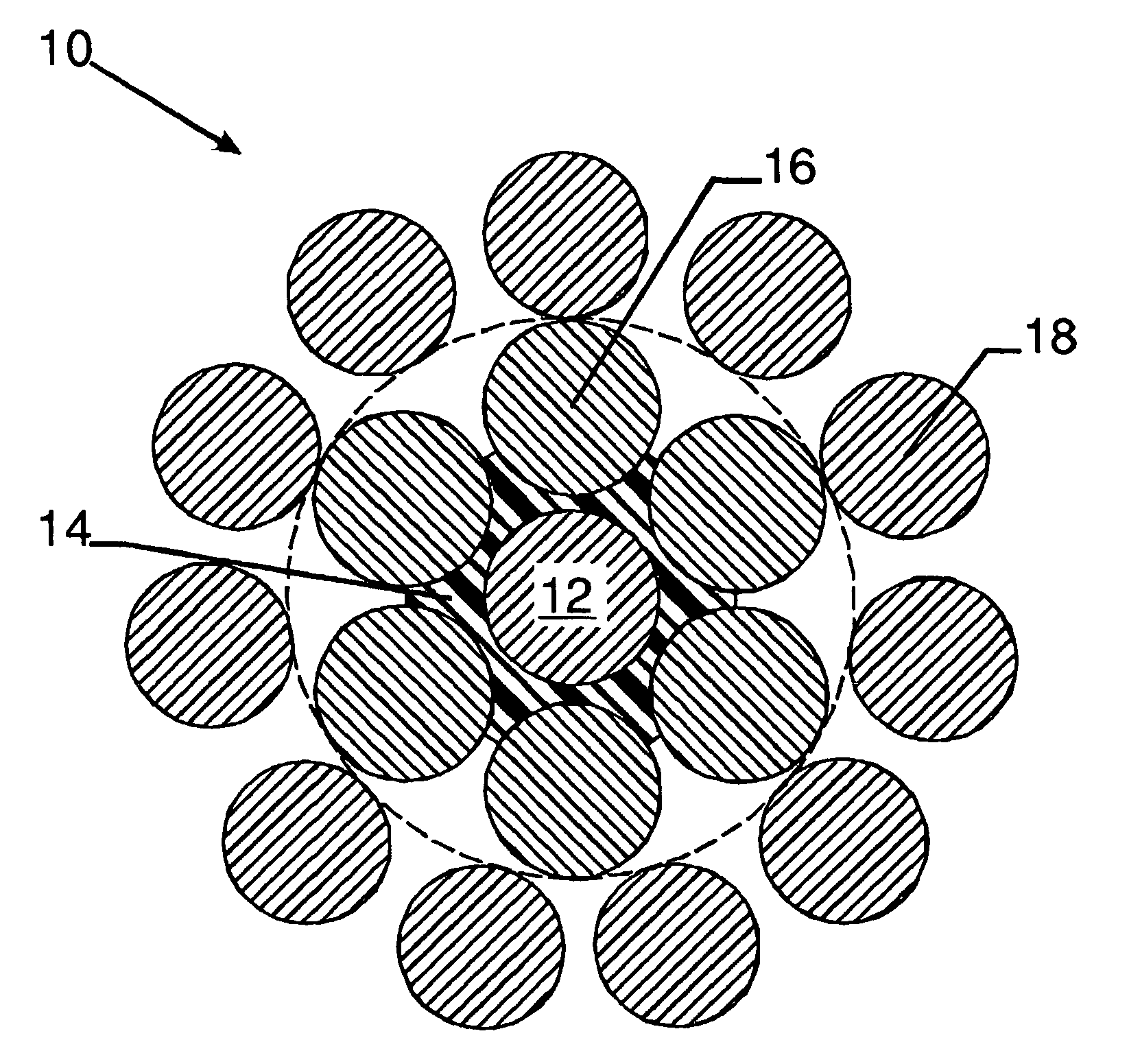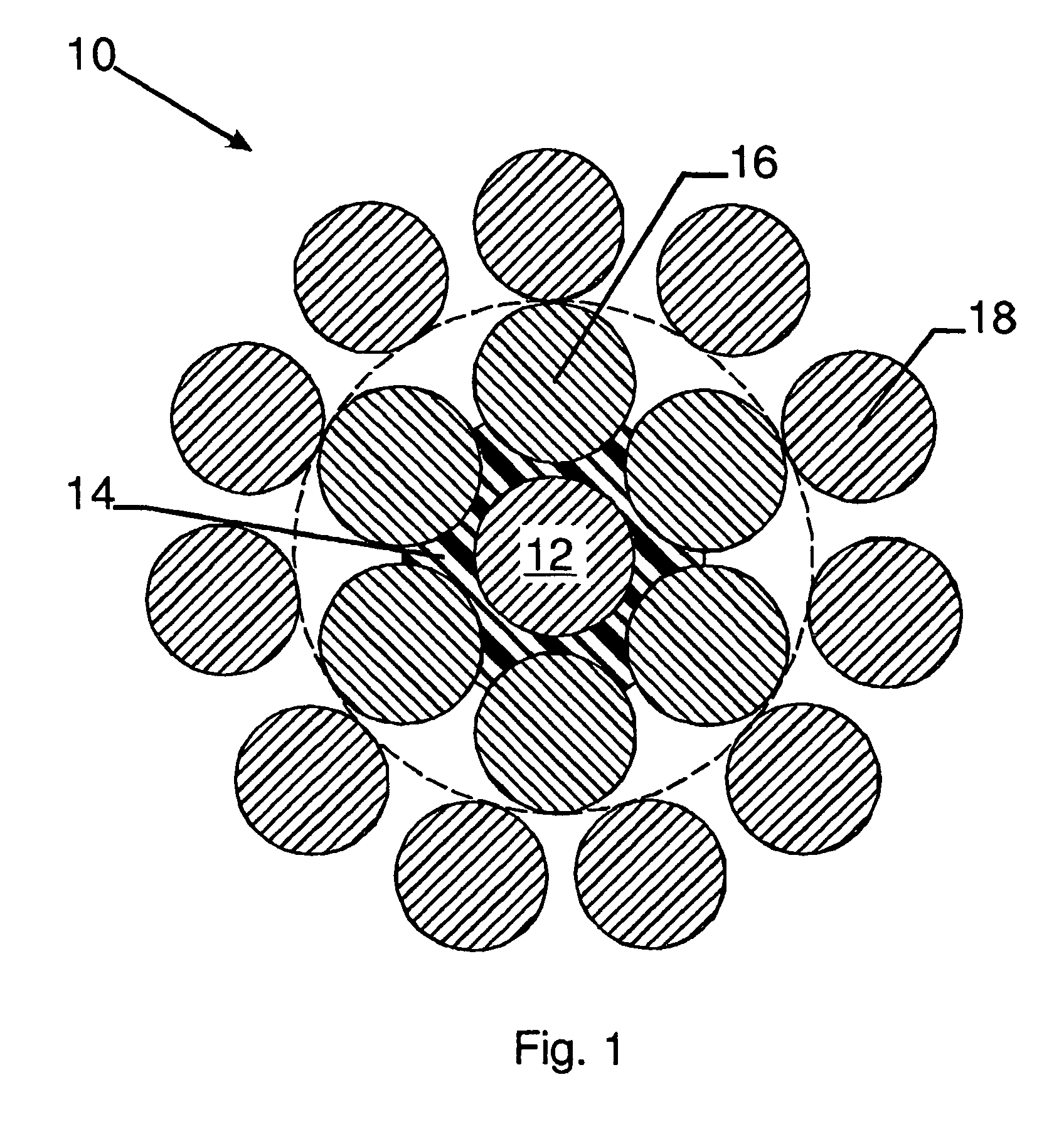Open layered steel cord with high breaking load
a technology of open layered steel and high breaking load, which is applied in the field of steel cord, can solve the problems of high breaking load, high cost and weight of tires, and more difficult to achieve a fully open structure, and achieve the effect of reducing the tensile strength of preformed steel filaments, and controlling the decreas
- Summary
- Abstract
- Description
- Claims
- Application Information
AI Technical Summary
Benefits of technology
Problems solved by technology
Method used
Image
Examples
Embodiment Construction
[0031]FIG. 1 shows the cross-section of a steel cord 10 according to the invention. The steel cord 10 comprises a steel core filament 12 of 0.30 mm. This steel core filament 12 has been coated in advance, e.g. by means of an extrusion process, by a polymer 14 such as polyethylene terephtalate (PET). PET has proven to be a suitable polymer because of its low absorption of humidity and of its high resistance against mechanical fretting of neighbouring filaments. Prior to the twisting process of the steel cord 10, the diameter of the PET coated steel core filament 12, 14 amounts to about 0.38 mm. An intermediate layer of six intermediate steel filaments 16 is twisted around the PET coated core steel filament 12, 14. The diameter of the intermediate steel filaments 16 is 0.30 mm. The twisting step of the intermediate steel filaments 16 is 9 mm in S-direction. Due to the radial pressure of the intermediate layer filaments 16, the PET 14 flows somewhat between the intermediate steel filam...
PUM
| Property | Measurement | Unit |
|---|---|---|
| tensile strength | aaaaa | aaaaa |
| diameters dc | aaaaa | aaaaa |
| tensile strength | aaaaa | aaaaa |
Abstract
Description
Claims
Application Information
 Login to View More
Login to View More - R&D
- Intellectual Property
- Life Sciences
- Materials
- Tech Scout
- Unparalleled Data Quality
- Higher Quality Content
- 60% Fewer Hallucinations
Browse by: Latest US Patents, China's latest patents, Technical Efficacy Thesaurus, Application Domain, Technology Topic, Popular Technical Reports.
© 2025 PatSnap. All rights reserved.Legal|Privacy policy|Modern Slavery Act Transparency Statement|Sitemap|About US| Contact US: help@patsnap.com


